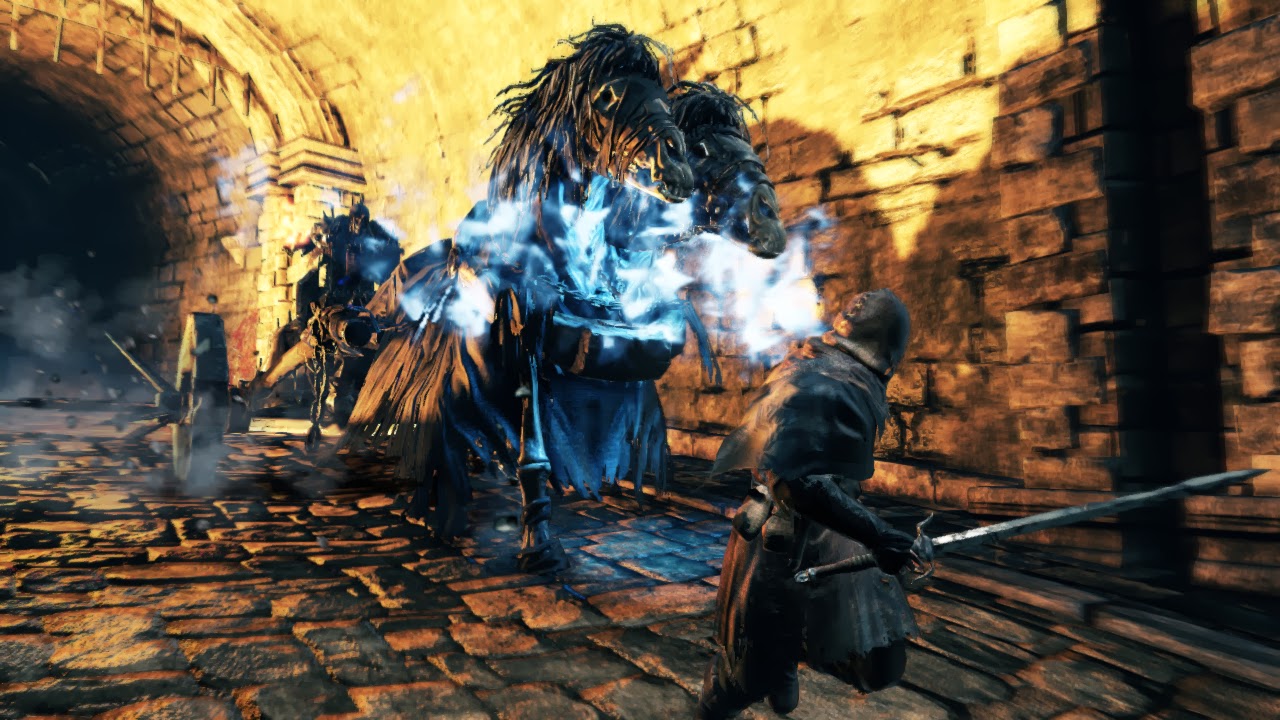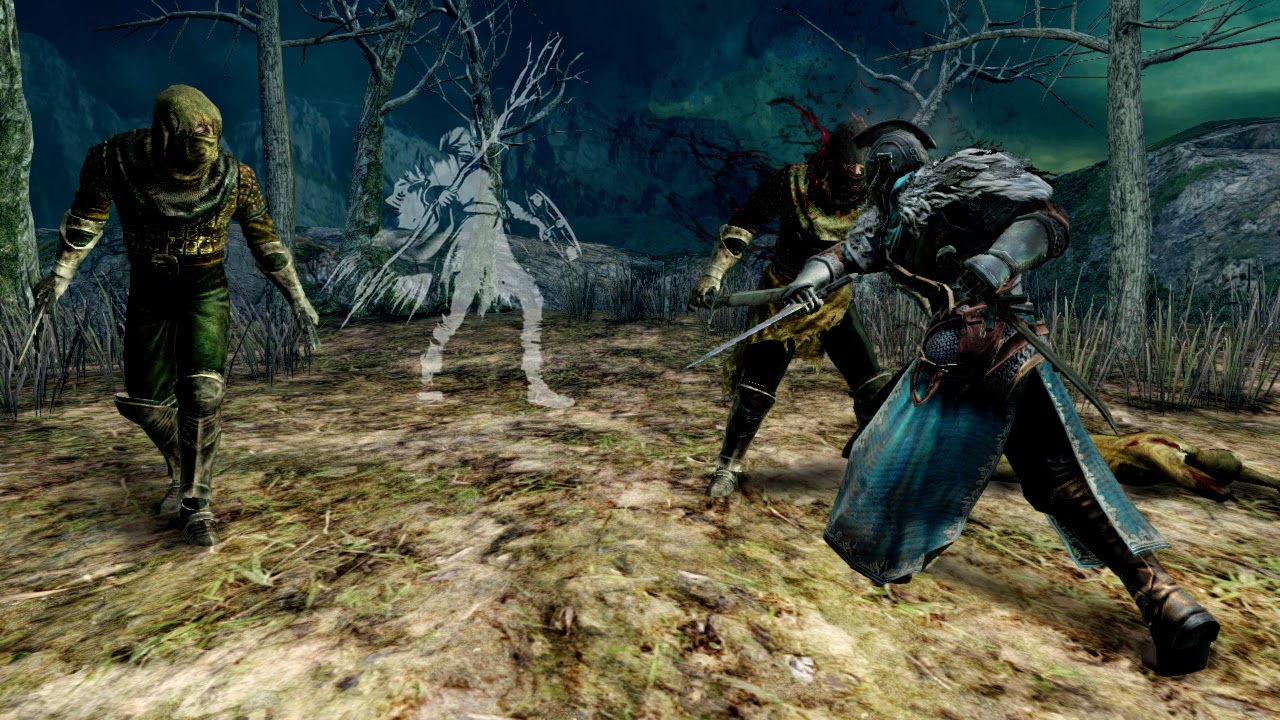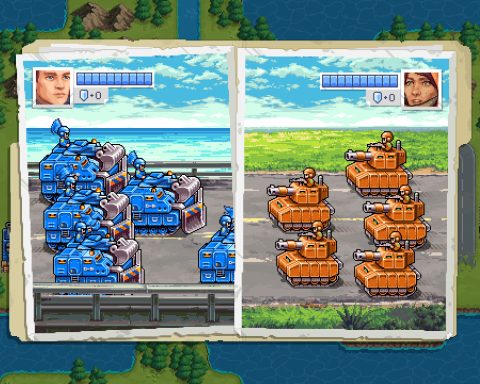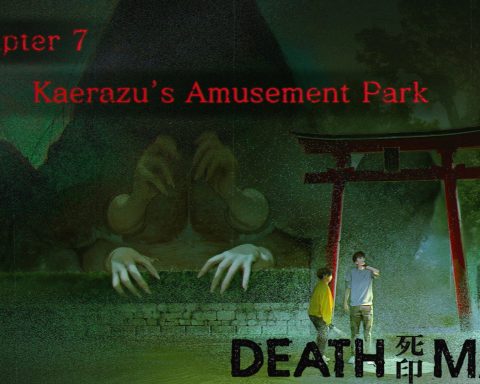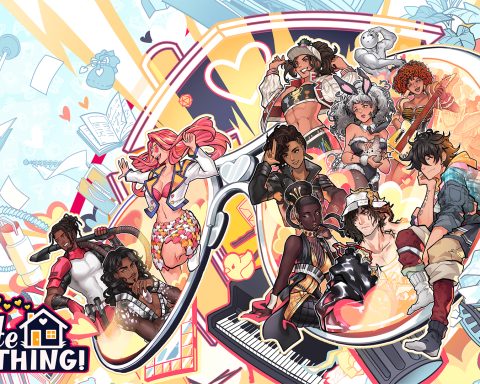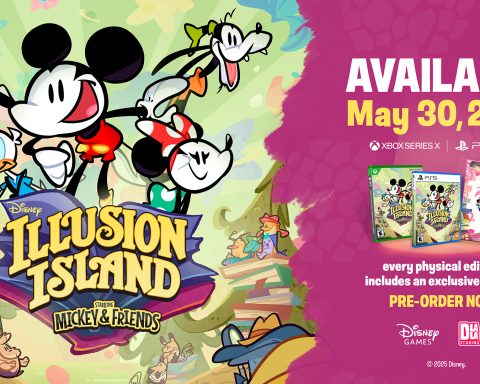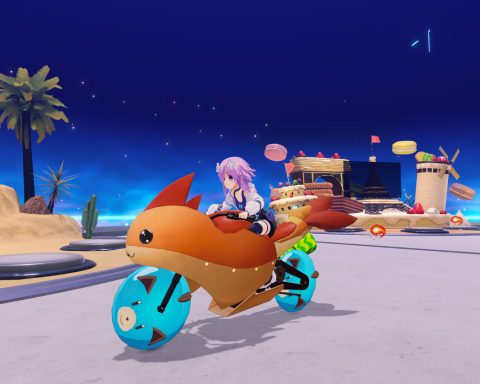 Review by Matt S.
Review by Matt S.
When it came to the first Dark Souls, I loved the game while not really liking it. As much as that sounds like a contradiction, I can explain. Dark Souls was a brilliant game with near-perfect level design. It featured a truly difficult but rewarding difficulty curve, a spectacular visual aesthetic, and a truly wonderful online play option that allowed other players to be a part of your experience without damaging the atmosphere that the developers worked so hard to build.
But I didn’t always like what I was playing for a simple reason; Dark Souls was a spiritual sequel to Demon’s Souls, and Demon’s Souls was in turn a spiritual sequel to the King’s Field games on the PlayStation 1 and 2. Demon’s Souls and King’s Field were games characterised by a very simple theme; they were unrelentingly bleak and hostile. Those games took great pleasure in punishing players without really giving them a chance, and were happy to do so from the very first second of each game. None of those games ever provided relief and you went into it knowing that with every step you took, death was awaiting you. At times it felt brutal, unfair, even cruel, but getting through it was a true trial by fire, and the sense of relief and closure on reaching the other end was unparalleled.
I still remember to this day my first experience with King’s Field IV on the PlayStation 2 – the first game I played in the loose franchise. The game loaded, I took two steps forwards and immediately was killed as the ground in front of me collapsed into a river of lava. Those two steps, on a restart, taught me everything I needed to know about how these games work – I needed to pay attention. If the ground is a different colour from the safe path that I was standing on, then it was a warning that perhaps running over it was a bad idea.
Demon’s Souls then came along and took all the same ideas around punishing atmosphere, and refined them because, finally, the developers at From Software had a budget of note to work with. The development team had clearly always wanted to make a game where Japanese melancholia could merge with the European Gothic aesthetic, but with the King’s Field games limited hardware and budgetary constraints kept the series back from being more than a dark, difficult set of JRPGs. With Demon’s Souls the persistent, endless darkness remained – a constant threat and as much a character as anything that moved within the game. But with this game there was a refined combat system and a sense of innovation that King’s Field always lacked. The result was, as far as I am concerned, the game that has the most pure vision that we had seen all generation.
Fast forward to Dark Souls, and I could tell while playing it that this is a game that had a larger development budget, and so it needed to be more appealing to a larger audience. The solution? Compromise some of the hostility in the environment to make something more friendly in the screenshots on the back of the box. Dark Souls injected moments of light into the game. Sunlight broke through the sky to illuminate the decrepit, but truly grand environments. A descent into the catacombs felt more like a generic horror trip than the claustrophobic dark hell of Demon’s Souls interior environments. In Dark Souls there were moments of relief that Demon’s Souls never had, and thematically that felt to me to be a compromise by the developers on their vision in order to create the mega hit that they achieved.
I don’t begrudge From Software for the direction it took with Dark Souls, but I preferred the purity of Demon’s Souls. What does all that have to do with a review of Dark Souls 2, you ask? It puts my expectations of the game in context. Understandably, I was worried that Dark Souls 2 would be granted an even larger budget and the game would shift even further towards a standard (albeit difficult) JRPG experience. It didn’t help that Hidetaka Miyazaki, Demon’s Souls director, took a step back with Dark Souls 2. Surely, I thought to myself, this is a sign that the game’s all but given up on the vision that produced the brilliance of Demon’s Souls.
The opening dozen or so hours didn’t really do much to convert me from that opinion. First up I came to a peaceful, if depressing village which would serve as my safety hub going forwards, and a talking cat tried to sell me stuff. Now, even though the talking cat was sinister in the same sense as the Cheshire Cat from Alice in Wonderland, he didn’t fit tonally with what I had experienced in either previous Souls game. For better or worse, From Software had decided that talking cats now fitted in with the Souls formula, despite no one ever kicking back and saying “Demon’s Souls would have been a far better game if it had a talking cat in it.”
Making the decision to try and push the talking cat out of my thoughts, I decided to explore and start my quest proper. As with Dark Souls, the world is technically open and players can explore it however they feel like, but there is only one area that is realistically possible to explore without bumping into a monster of almost lethal difficulty for low-level characters. That area is a forested region, and it looks gorgeous, complete with a babbling river and lush trees. This put me right off; previous Souls games had forested regions, but they were every bit as twisted as the dungeons. A pretty green environment was not what I had expected or hoped for. This transitioned rapidly into a fortress crumbling into ruin, but one which offered such spectacular views that were it not for the evil zombie things out to kill me I would have thought it the ideal place to set up a tourism resort (well, perhaps not quite, but you get the gist). My only consolation prize was that I could see a black-as-midnight tower in the distance, and that bit looked as menacing as I was would expect to find in a Souls game, and I just knew that eventually I’d be venturing into it to face some kind of unknown horror.
There’s a fast travel system now; a gamey element that rips some of the immersion out of the experience. Yes, it is far more convenient to be able to jump from place to place now, but that comes at the expense of atmosphere. The more I used the fast travel system, the more the environments started to feel like a sequence of check points rather than the environments themselves being part of the storytelling process. And while Dark Souls 2 continues to be a truly punishing game, the edge is taken out by being able to pop back to that peaceful little village for some R & R whenever I felt like it. I get that the developers probably took inspiration from Demon’s Souls’ Nexus, but in that original game checkpoints were spaced out far more sparsely, and players weren’t really encouraged to keep ducking back and forth. And the Nexus in Demon’s Souls wasn’t exactly an inviting place in its own right.
While I wasn’t able to test the online features much (the servers were not operating for much of the testing time for this review), it is now possible to have voice chat within the game’s online multiplayer. In every other way it’s the same multiplayer as the last game; players are able to leave one another helpful notes as they play, warning of dangerous enemies or traps lying in wait ahead. Further, it’s possible to become a “white phantom” and assist struggling players fight bosses. Players who are feeling less generous are able to “invade” another player’s game as a red souls to try to kill them for loot. All of this is great, but that new voice chat option is dangerous. While it does require that both people have the option turned on (something I will not be doing), its simple existence stands as an indication that perhaps this new development team doesn’t quite understand where the appeal of multiplayer in Demon’s Souls and Dark Souls lay. The multiplayer was great precisely because it meant that people could be a part of one another’s games while not being able to ruin the narrative, environmental storytelling and carefully designed atmosphere within the game. Or to put it another way, the more limited the means of communication, the more interesting communication becomes.
Take for example the stories of the “friendly” red souls from the original Dark Souls. People would invade other player’s games, and then behave non-threateningly at those players. It was fascinating to watch how some players responded to this when there was no way that the red soul could effectively communicate that they mean no harm. Many would still attack the red soul, but one or two realised that they were under no danger. It was a fascinating online interaction experiment, and it was possible precisely because the developers restricted the communication options available to players.
While voice chat will be popular for some, the idea that people will be jumping into someone else’s game with bad music blaring in the background and yelling obscenities back and forth means that those players will not be experiencing a game that is even close to a true Souls experience. I don’t understand why the developers would facilitate the destruction of their own game’s atmosphere, other than if they wrongfully assumed that direct interaction would enhance the Souls experience. If they did make that assumption, they are misguided, and so simply having the option there leaves a sour taste in my mouth – it reeks more of commercial pressure than any meaningful artistic decision by the game creators.
At first, all of what I’ve described above really put me off Dark Souls 2. I saw it as more of a generic fantasy adventure than something unique and striking. It plays as well as previous Souls games, and I chose the dual wielding blade master, which is a fun new addition to the character roster, but where in Demon’s Souls (and to a lesser extent Dark Souls) I was more interested in understanding the game than playing it, in Dark Souls 2 I was floating through the game. I was enjoying myself but hardly engaged on that deeper level that I had been hoping for.
But after that introductory dozen hours or so I found myself increasingly hooked. Not because the tone of the game had changed – by then I had relegated myself to the fact that this isn’t a true “Souls” game from a thematic point of view – but rather the development team’s eye for detail and the level design is as compelling as ever. The game’s environments are filled with secrets and items of interest that are always just out of reach. Danger remains behind every corner, though it must be said that the developers are running out of new ways to trick and surprise me, and a couple of boss battles were a little too familiar for their own good. All together each new environment is exciting to explore, just to see what the level designers have come up with next.
Scattered through the environments are bonfires, which as with the last Dark Souls heal you completely and reset the enemy positions in order to force you to fight them again. This time around bonfires also act as the fast travel system, allowing you to instantly teleport to any previously-visited bonfire. As I’ve described already, that fast travel system is mechanically sound even if takes a little away from the game’s atmosphere. And Dark Souls 2 still retains a sadistic edge; with every death players lose a percentage of their maximum health, making their next attempt at the same task even more difficult. It’s possible to drop all the way down to half health this way, and the only way to reverse the “curse” is to burn a rare and precious effigy at a bonfire.
As with the previous Dark Souls there’s a threadbare plot in terms of cut scenes and the like, but snippets will be told to you through the various NPCs that litter the environment. Much of the deeper meanings within the game remain obscured, and just as the useless pendant from Dark Souls kept people talking about the game for months and years afterwards, I suspect the message boards will be occupied heavily by people discussing some of the plot specifics here too. If nothing else, Dark Souls 2 shows that the developers still have a firm grasp on environmental storytelling; everything within every setting makes sense, and players that pay attention can discover a surprisingly rich back story to the action, as told through the crumbling ruins and their demonic inhabitants.
For people who have played the previous Souls games, be glad to know that From Software haven’t messed up too much with the formula. It’s still the kind of game where your hero is quite squishy, and being able to duck out of the way of strikes is every bit as important as landing your own. The new dual wielding ability is, as I wrote earlier, a great addition to the game, even if it is a more complicated form of combat better suited to experts. Two blades turns you into a whirling dervish of death, but not being able to adequately block attacks (especially ranged attacks) means you’re also going to need great timing to get through some of the encounters.
For newcomers, I highly recommend playing the game either as a wizard, or heavily armoured and shielded knight at first, because Dark Souls 2 has teeth and the very first encounter can easily kill you if you let it. It’s a game of patience, and being able to accept that making it two steps further before running into something deadly does count as progress. Character death is integral to the experience; die, and your hero will be resurrected at the nearest bonfire with a little less maximum health, but ready to give it another go. As he/ she kills enemies, he/ she earns souls, and this is the currency the game uses – the tougher the enemy, the more souls, and those souls can be traded in for either equipment, or to level up. Die, and the souls are dropped, and as long as you can get back to that spot, you can recover the lost souls. Die again before getting there, and the souls are gone for good.
The game neatly settles into a rhythm, where each death becomes a learning experience, and slowly players learn how to avoid traps and defeat difficult enemies in order to progress further through the labyrinths. Boss battles are clearly marked, and they are very, very difficult, but getting stuck on those is less of a problem, since it’s easy enough to recruit some experienced help through the multiplayer service to help take down the creature. The point is that Dark Souls 2 is challenging, but ultimately rewarding, and it stands as one of those rare examples of a frustration-free difficulty that encourages players to get better at playing the game, rather that putting them off ever trying again.
That balance is why its predecessors were so popular, and that’s why the sequel is certainly going to be a major hit. It’s just a pity that in the pursuit of a fantasy that will appeal to a broad audience some of what made From Software’s earlier games so special has been compromised, and Dark Souls 2 is just not as compelling to me as a result.
But then, I know I’m in the minority when I say I liked the intensity of Demon’s Souls over the refinements in Dark Souls, and I’m certainly not going to claim that I dislike Dark Souls 2. Quite the opposite; as with the first game I love everything about it, while secretly (or not-so secretly, really) wishing that From Software went back to take another crack at a King’s Field game.
– Matt S.
Editor-in-Chief
Find me on Twitter: @digitallydownld

